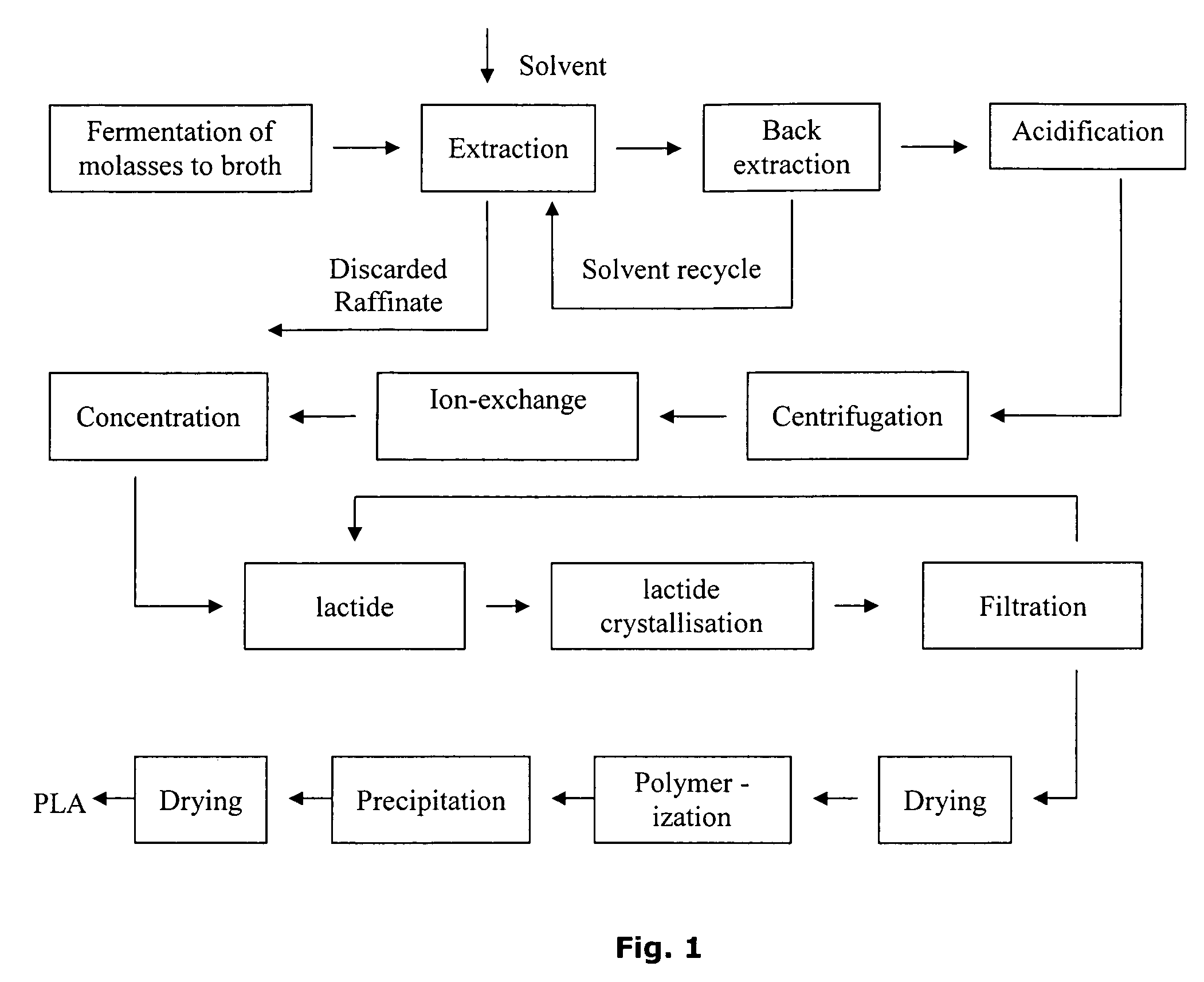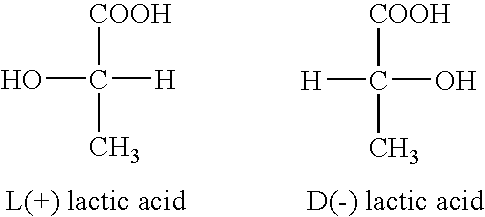Process for the production of polylactic acid (PLA) from renewable feedstocks
a technology of polylactic acid and feedstock, which is applied in the direction of fertilization, etc., can solve the problems of complex biochemical production of lactic acid, undesirable environmental concerns, calcium sulfate,
- Summary
- Abstract
- Description
- Claims
- Application Information
AI Technical Summary
Benefits of technology
Problems solved by technology
Method used
Image
Examples
example 1
[0119]To 250 ml of fermentation medium containing cane molasses adjusted to a final fermentable sugar concentration of 70 g / L and enriched with corn steep liquor (25 g / L) and yeast extract (10 g / L), 24 h old culture of Lactobacillus delbreuckii was added as inoculum at 10% final concentration. The fermentation was carried out in shake flasks at 42° C. for 72 h at 150 rpm in a Gallenkamp incubator shaker. The pH of the fermentation broth was maintained at 6.0 using CaCO3. The yield of lactic acid at the end of 72 h was 50 g / L.
example 2
[0120]A 2 L batch of the fermentation medium containing cane molasses and supplemented with 25 g / L corn steep liquor and 10 g / L yeast extract, was run in a 2.5 L bioreactor. The initial sugar concentration was adjusted to 70 g / L. The medium was inoculated with 200 ml of 24 h old culture of Lactobacillus delbreuckii. The fermentation was carried out at 42° C. for 48 h at 200 rpm agitation. The pH of the medium as maintained at 6.0 using liquid ammonia. The lactic acid yield was 66 g / L at the end of the run.
example 3
[0121]The lactic acid fermentation was scaled up in a 500 L fermentor with a working volume of 350 L. The medium containing cane molasses (adjusted to 70 g / L sugar), corn steep liquor (25 g / L) and yeast extract (10 g / L) was inoculated with 24 h old culture of L. delbrueckii (35 L) grown in a 100 L fermentor. The fermentation was carried out at 42° C. for 48 h at 200 rpm agitation with pH maintenance at 6.0 with liquid ammonia. The yield of lactic acid was 50 g / L.
PUM
| Property | Measurement | Unit |
|---|---|---|
| concentration | aaaaa | aaaaa |
| extraction efficiency | aaaaa | aaaaa |
| temperature | aaaaa | aaaaa |
Abstract
Description
Claims
Application Information
 Login to View More
Login to View More - R&D
- Intellectual Property
- Life Sciences
- Materials
- Tech Scout
- Unparalleled Data Quality
- Higher Quality Content
- 60% Fewer Hallucinations
Browse by: Latest US Patents, China's latest patents, Technical Efficacy Thesaurus, Application Domain, Technology Topic, Popular Technical Reports.
© 2025 PatSnap. All rights reserved.Legal|Privacy policy|Modern Slavery Act Transparency Statement|Sitemap|About US| Contact US: help@patsnap.com


